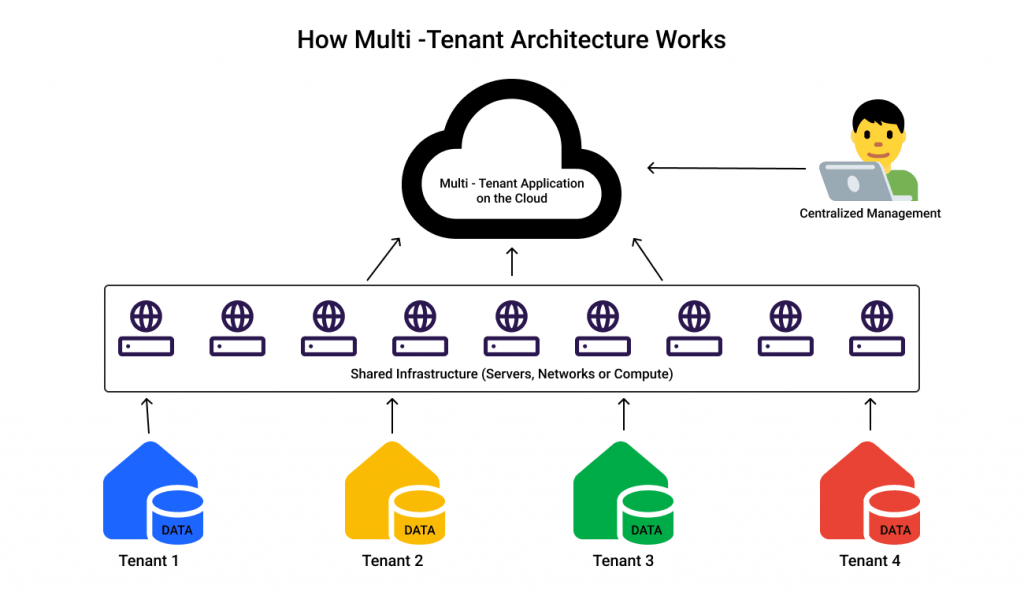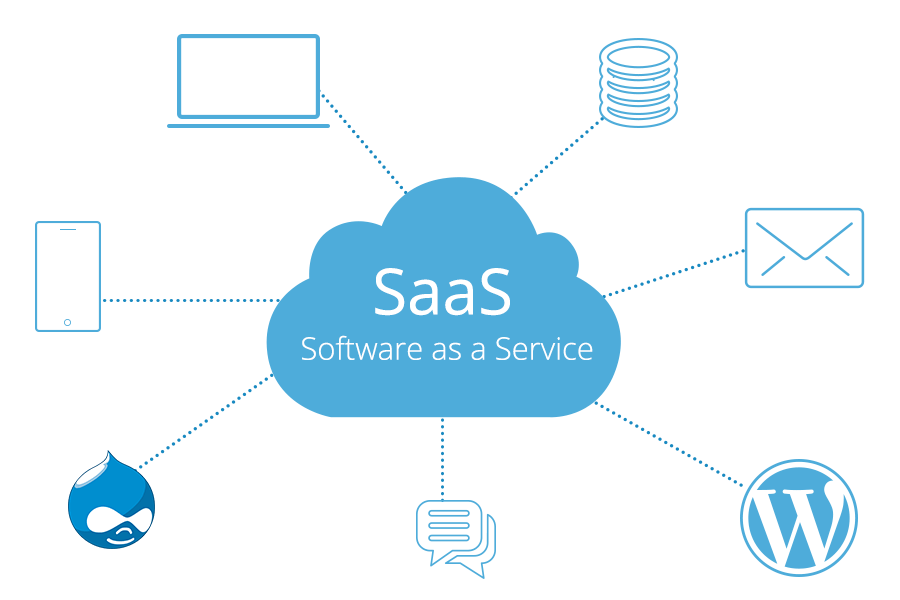
- Introduction to Multitenancy
- How Multitenancy Works
- Multitenancy Architecture: Key Components
- Benefits of Multitenancy in Software Applications
- Applications of Multitenancy in Different Industries
- Challenges of Multitenancy and Best Practices
- Conclusion
Multitenancy is a cornerstone of modern cloud computing and software development, allowing a single application instance to serve multiple clients, known as tenants in Cloud Computing Course. This architectural model enables organizations to optimize resource usage, reduce costs, and scale efficiently while ensuring data privacy and customization for each tenant. In this article, we will explore how multitenancy works, its underlying architecture, and its widespread applications across various industries. We will also address the benefits, challenges, and best practices for implementing multitenant solutions in today’s digital landscape.
Learn the fundamentals of Cloud Computing with this Cloud Computing Online Course .
Introduction to Multitenancy
In modern software development and cloud computing, multitenancy is a fundamental concept that plays a critical role in improving efficiency, cost-effectiveness, and scalability. Multitenancy refers to a software architecture where a single instance of an application or service serves multiple clients, called tenants. Each tenant’s data and configurations are isolated from others, but they share the same application resources, such as databases, servers, and infrastructure. The core idea behind multitenancy is to optimize resource usage and reduce costs while offering customization to individual tenants. In cloud Sandbox Environment, it allows cloud providers to serve multiple clients (tenants) on a shared platform without compromising on security or privacy. This model is particularly prevalent in Software as a Service (SaaS) applications, where businesses or users access applications hosted in the cloud. Understanding multitenancy and its benefits is crucial for businesses looking to implement scalable and cost-efficient software solutions. In this article, we will dive into how multitenancy works, its architecture, and the applications where it is used.
How Multitenancy Works
- Single Software Instance The most distinguishing feature of multitenancy is that all tenants use a single software instance. The application’s core codebase remains the same, but each tenant’s data, configuration, and preferences are kept separate from others. This reduces the need to deploy separate instances of software for each customer, leading to efficient use of resources.
- Data Isolation Even though multiple tenants share the same application, each tenant’s data remains isolated. Tenants cannot access each other’s data, ensuring privacy and security. Data isolation is achieved through advanced techniques such as database partitioning or logical separation within the same database.
- Customizability While sharing resources, each tenant can configure certain application parameters according to their specific needs. This allows tenants to have customized user interfaces, workflows, and access controls without impacting other tenants.
- Scalability and Resource Optimization Multitenancy allows Denial of Service Dos Attacks providers to scale applications easily. Resources such as servers, databases, and storage can be efficiently allocated to tenants based on demand. Since resources are shared, costs are reduced, and the provider can serve more clients without needing to deploy separate instances for each one.
- Tenant Provisioning and Management A central system manages tenant provisioning and onboarding. Tenants can be added dynamically, with the system automatically handling resource allocation and isolation. The system can also apply updates, patches, and configuration changes across all tenants, ensuring consistency and reducing the management overhead. In this way, multitenancy enables efficient and secure software delivery to multiple customers while ensuring high levels of data privacy, customization, and scalability.
- Database Isolation: In this approach, each tenant has a dedicated database, ensuring complete separation of data. This method can be resource-intensive but offers the highest level of isolation.
- Schema Isolation: In schema isolation, a single database is used, but each tenant’s data resides in its schema. This provides a balance between cost and isolation.
- Table Isolation: In table isolation, all tenants share a single schema and a single set of tables, with each row being tagged with a tenant identifier. This method is cost-efficient but requires advanced IP Security mechanisms to ensure data privacy.
- Software as a Service (SaaS): SaaS providers are the most prominent users of multitenancy. Companies offering cloud-based applications like CRM (Customer Relationship Management), HRM (Human Resource Management), or project management tools often rely on multitenancy to serve multiple clients on a shared platform.
- E-commerce Platforms: E-commerce platforms serving multiple retailers or vendors can leverage multitenancy to host different stores on a single instance. Each vendor’s store can be customized and managed independently while sharing the same underlying infrastructure.
- Healthcare: In the healthcare industry, multitenancy can be used to manage patient data for different clinics, hospitals, or medical professionals while ensuring data privacy and Cyberstalking. Healthcare applications can leverage multitenant architecture to support multiple organizations without compromising confidentiality.
- Finance: Financial institutions and accounting software providers can use multitenancy to offer cloud-based services to multiple businesses. Each financial entity can have its own customized solution while benefiting from a shared infrastructure for cost efficiency and scalability.
- Education: Educational institutions can use multitenancy to manage student data, course materials, and learning resources. Schools, universities, and online platforms can leverage a single instance of a Learning Management System (LMS) to serve different educational institutions or departments.
- Data Security and Privacy Since multiple tenants share the same infrastructure, ensuring robust data isolation and security is crucial. Proper encryption, access controls, and multi-factor authentication must be in place to safeguard tenant data.
- Performance Bottlenecks Since resources are shared, the performance of the application can be affected if one tenant experiences a sudden surge in traffic. Efficient resource allocation and load-balancing mechanisms are essential to mitigate performance issues.
- Customization Limitations While multitenancy allows for some level of customization, there may be limitations in how much each tenant can alter the Web Application Security. Over-customization can lead to operational complexity and performance issues.
- Tenant Management Complexity As the number of tenants grows, managing their configurations, preferences, and usage can become complex. Automating tenant provisioning, monitoring, and management can help streamline these tasks.
- Compliance Ensuring that the multitenant architecture complies with various regulations, such as GDPR or HIPAA, can be challenging. Each tenant may have different compliance requirements that must be met.
In a multitenant architecture, a single instance of an application is shared among multiple tenants. Despite using the same instance of the software, each tenant experiences a customized and isolated environment tailored to their needs. The working of multitenancy can be broken down into several components:

Multitenancy Architecture: Key Components
Multitenancy architecture involves several key components that ensure efficient service delivery to multiple tenants. These components work together to maintain data isolation, scalability, and resource optimization. Below are the key elements of a multitenant architecture:
Tenant Isolation Layer:The tenant isolation layer ensures that data, configurations, and interactions between tenants are isolated. This layer ensures that one tenant’s data cannot be accessed by another. It also prevents cross-tenant interference in the application’s functionality. This isolation can be implemented using various methods, including:
Unlock your potential in Cloud Computing with this Cloud Computing Online Course .
Centralized Management System:The centralized management system is responsible for provisioning, monitoring, and managing all tenants in the system. It tracks tenant activity, manages configurations, and allocates resources efficiently. This system is also responsible for automating updates, monitoring performance, and applying patches across all tenants.
Resource Pooling and Allocation:In multitenancy, resources such as CPU, memory, and storage are shared across tenants. A resource pooling mechanism ensures that resources are allocated dynamically based on the demands of each tenant. For instance, if one tenant experiences a sudden spike in usage, the system can allocate more resources to that tenant without affecting others.
Authentication and Authorization:A robust authentication and authorization Domain Name System is essential to ensure that only authorized users can access tenant-specific data and configurations. Each tenant may have different access controls based on their specific roles and privileges, and the multitenant architecture ensures that these controls are maintained.
User Interface and Customization:In a multi-tenant environment, the user interface (UI) can be customized for each tenant. While the core application remains the same, tenants can customize aspects of the UI such as logos, colors, workflows, and dashboards. This allows the application to cater to each tenant’s unique needs while maintaining a consistent user experience.
Logging and Monitoring:Since multiple tenants share the same infrastructure, logging, and monitoring are essential to ensure that each tenant’s performance and security are properly managed. Real-time monitoring helps in identifying performance bottlenecks, security breaches, or operational issues. Centralized logging allows administrators to track activities across tenants.
Benefits of Multitenancy in Software Applications
Multitenancy offers several key benefits, particularly for organizations providing software solutions to multiple clients. One of the most notable advantages is cost efficiency. By sharing the same infrastructure and software resources, multitenant architectures significantly lower the cost per tenant compared to maintaining separate instances for each client, making them ideal for Software as a Service (SaaS) applications. Cloud Computing Course, multitenancy supports scalability, allowing businesses to easily add more tenants without extensive infrastructure changes, making it easier to scale applications as the user base grows. Furthermore, the ease of maintenance and updates is enhanced, as managing a single instance for all tenants reduces administrative effort and ensures consistency when deploying updates, patches, and upgrades. Another benefit is resource optimization. Multitenancy helps maximize the use of shared resources, such as servers, databases, and storage, which allows cloud providers to allocate resources efficiently based on demand, leading to better overall utilization and energy savings. Additionally, the architecture accelerates time-to-market by enabling the rapid deployment and onboarding of new tenants. New tenants can be provisioned quickly, helping businesses expand their service offerings with minimal delays, a critical factor for SaaS providers aiming to accommodate new customers efficiently.
Aspiring to lead in Cloud Computing? Enroll in ACTE’s Cloud Computing Master Program Training Course and start your path to success!
Applications of Multitenancy in Different Industries

Want to ace your Cloud Computing interview? Read our blog on Cloud Computing Interview Questions and Answers now!
Challenges of Multitenancy and Best Practices
Conclusion
Multitenancy has revolutionized the way software applications are delivered, particularly in cloud-based environments. By allowing multiple tenants to share the same software instance while maintaining data isolation, customization, and scalability, businesses can optimize resources, reduce costs, and deliver high-quality services to a broader audience. However, it also requires careful consideration of Cloud Computing Course , performance, and customization aspects. With the right architecture, strategies, and best practices, multitenancy can provide significant benefits to both software providers and their clients across industries. Moreover, multitenancy enables software providers to offer more flexible pricing models, such as subscription-based or tiered pricing, allowing customers to choose the level of service that best suits their needs. This flexibility enhances customer satisfaction and makes services more accessible to a diverse range of businesses, from small startups to large enterprises. Additionally, multitenant architectures support faster onboarding for new customers, enabling them to quickly integrate with the platform without extensive setup processes. As organizations continue to adopt cloud technologies, the role of multitenancy in driving operational efficiency and business growth becomes increasingly critical. By embracing multitenancy, companies can stay competitive while providing exceptional services to a growing customer base.





